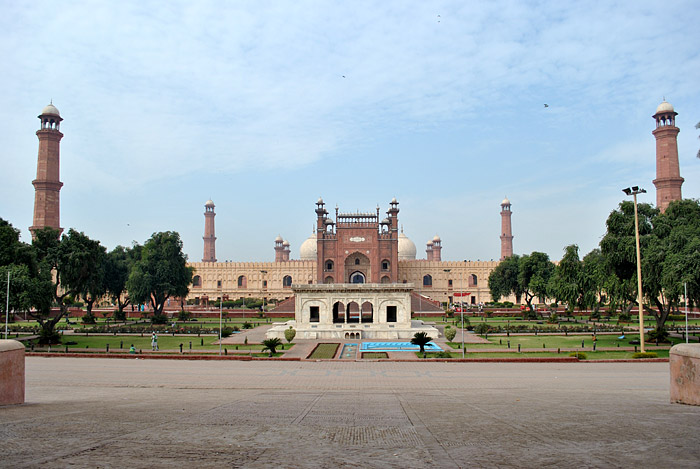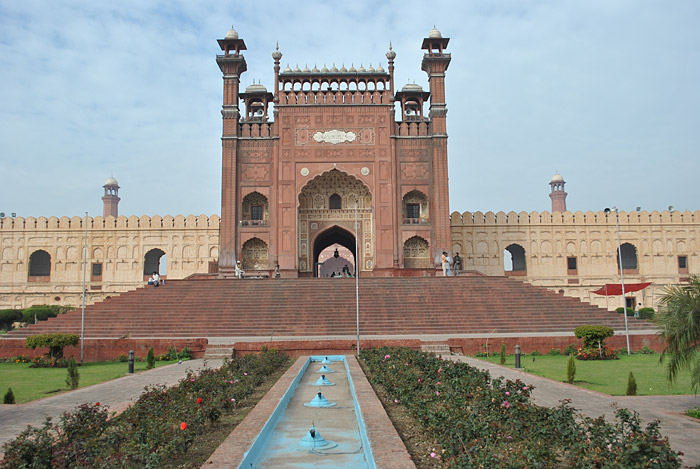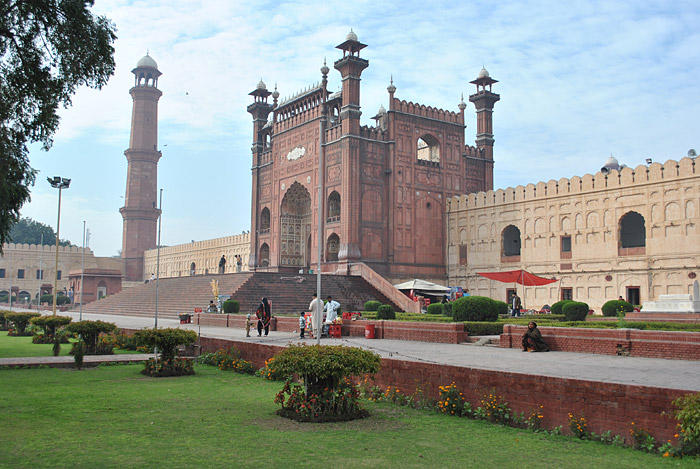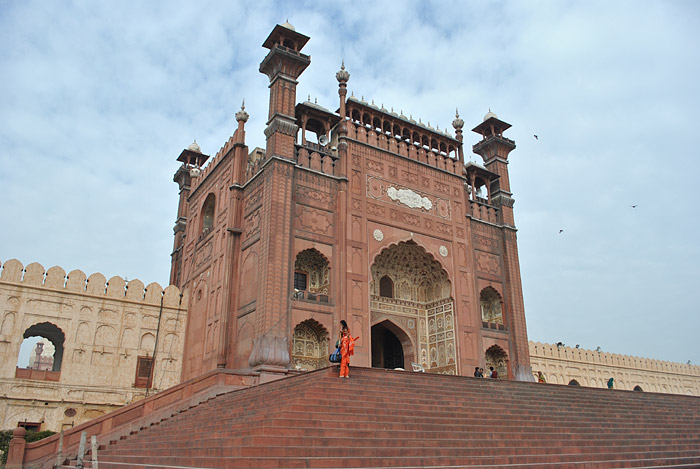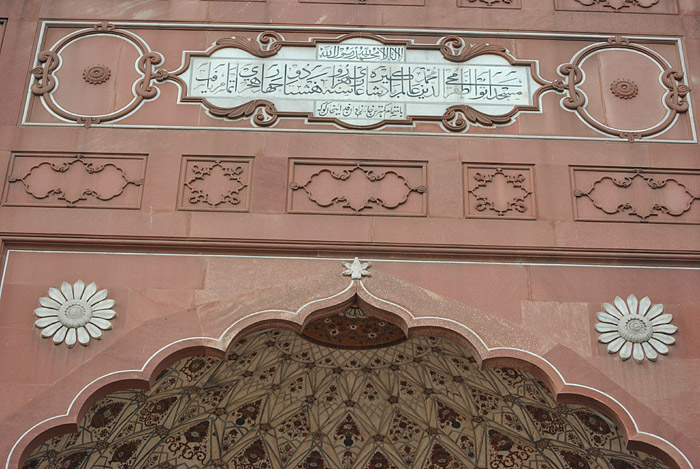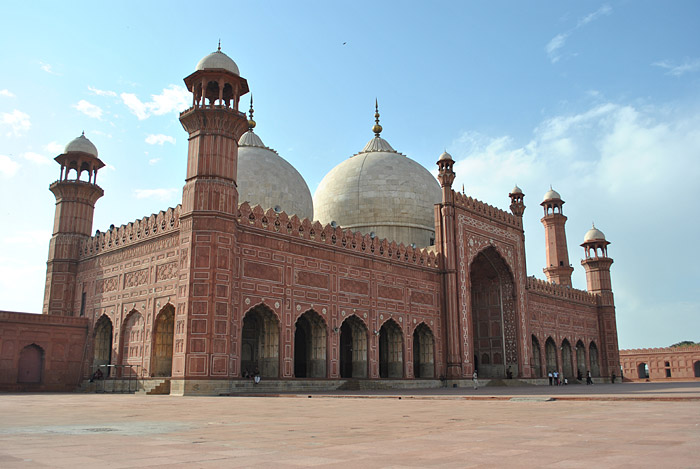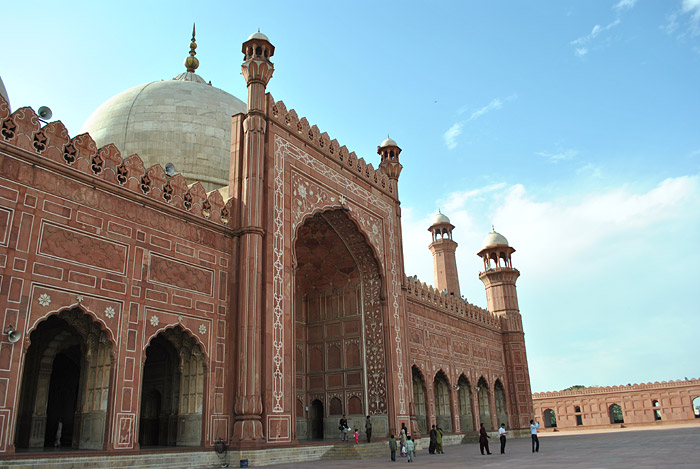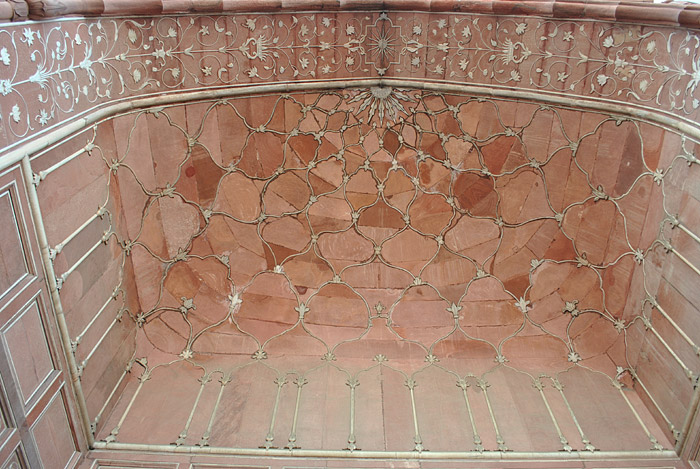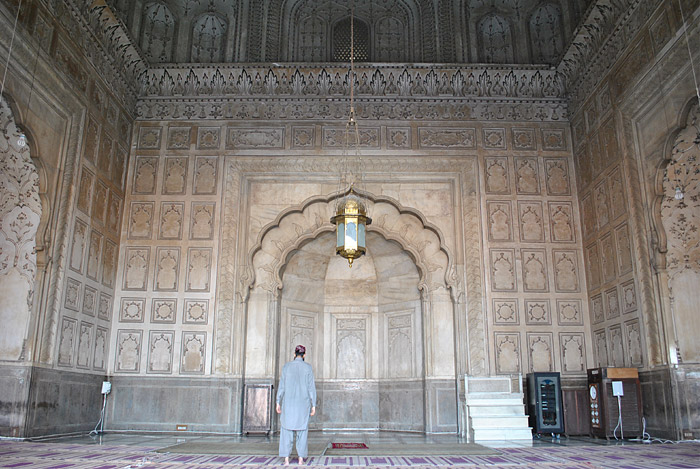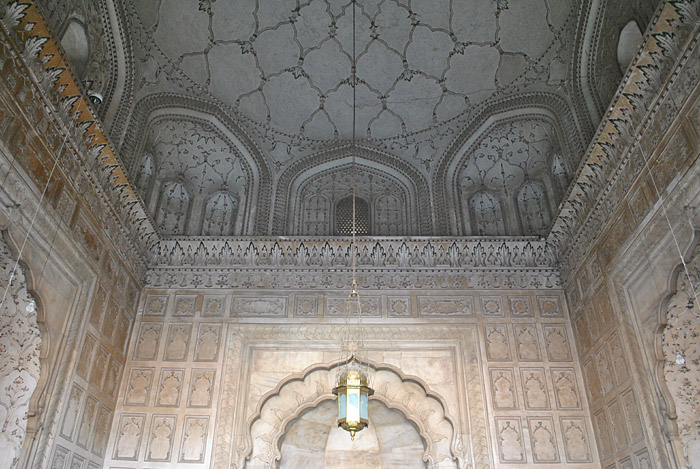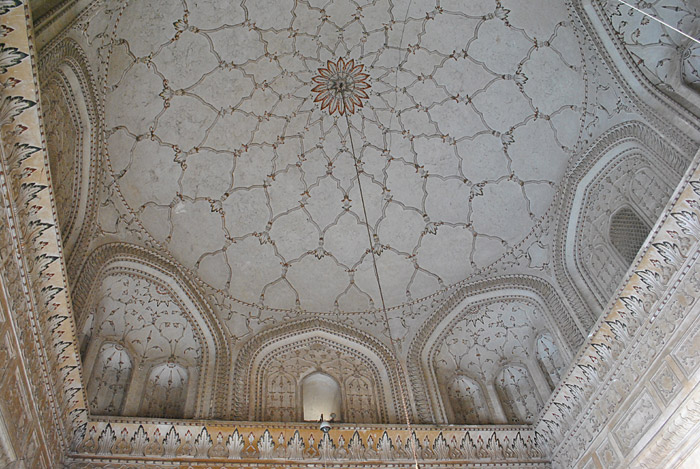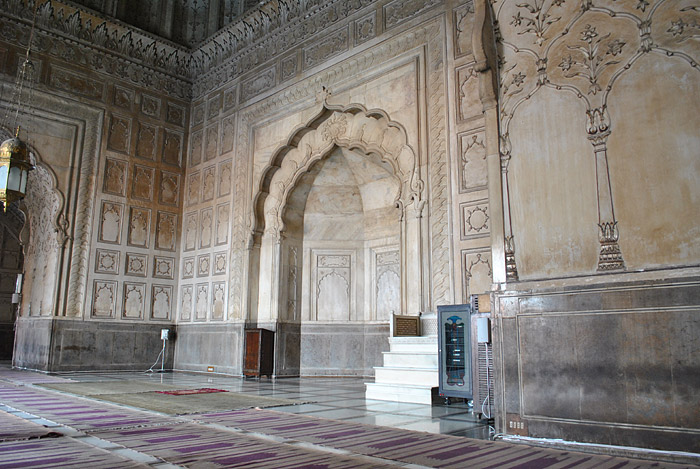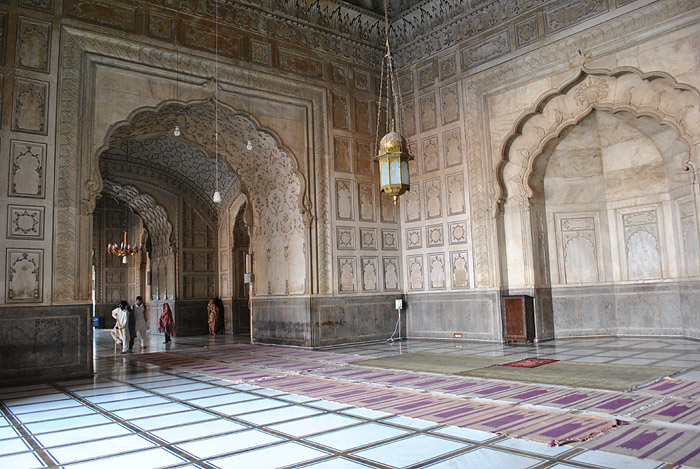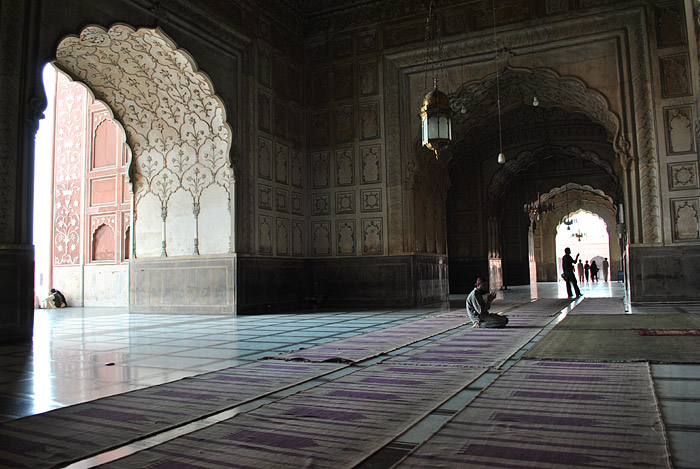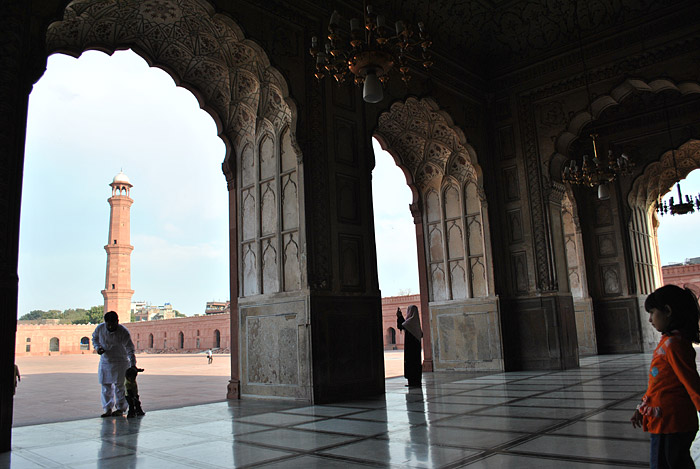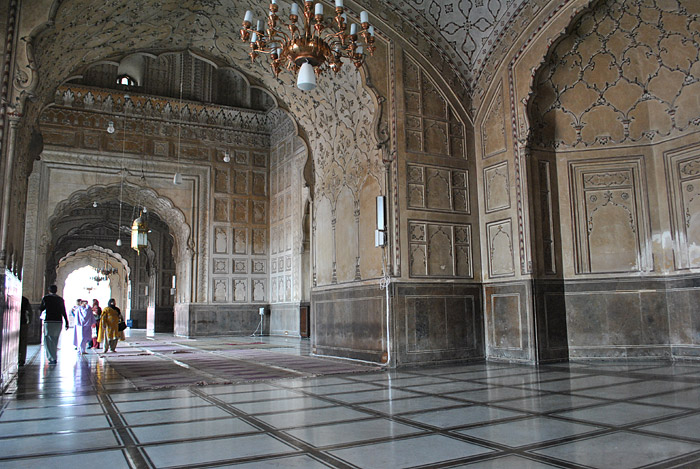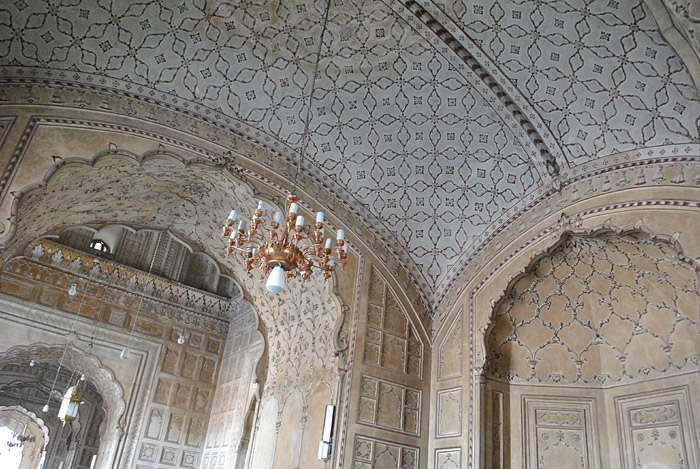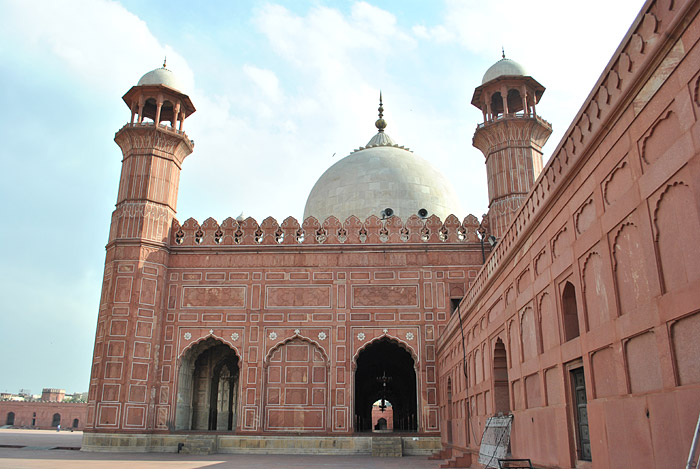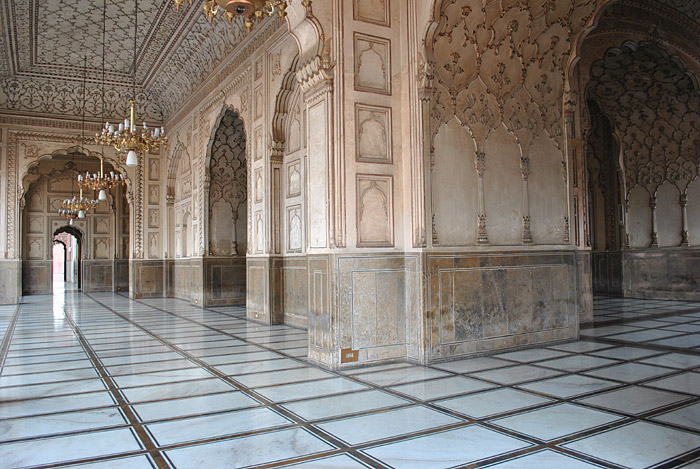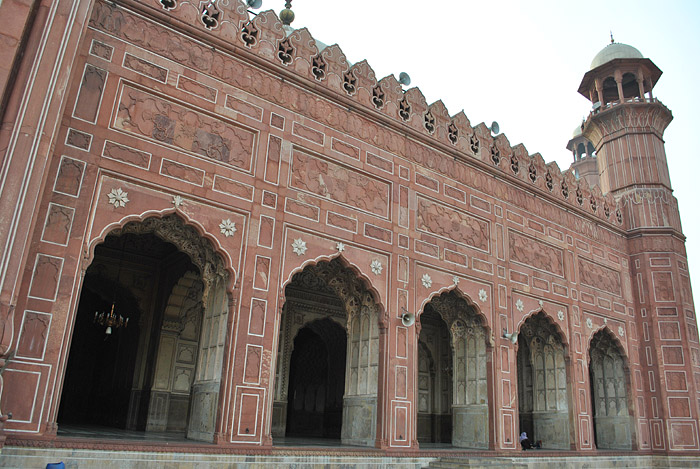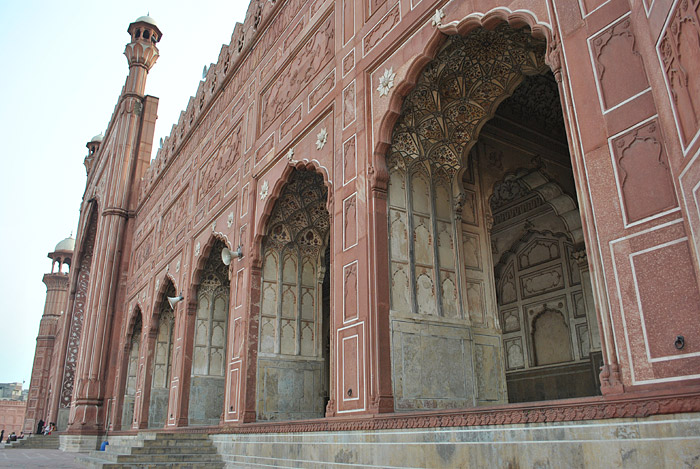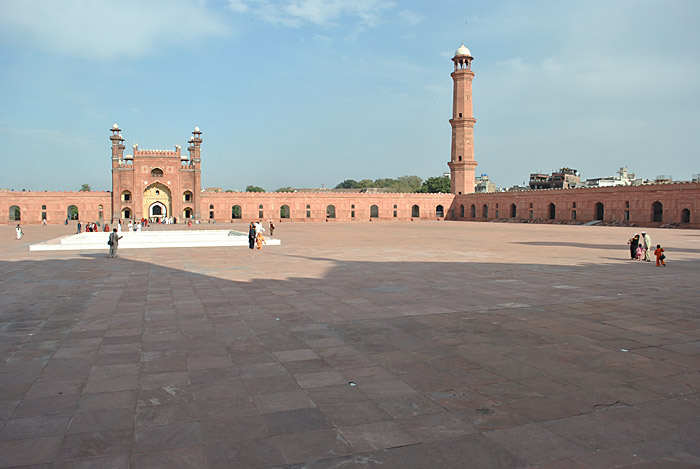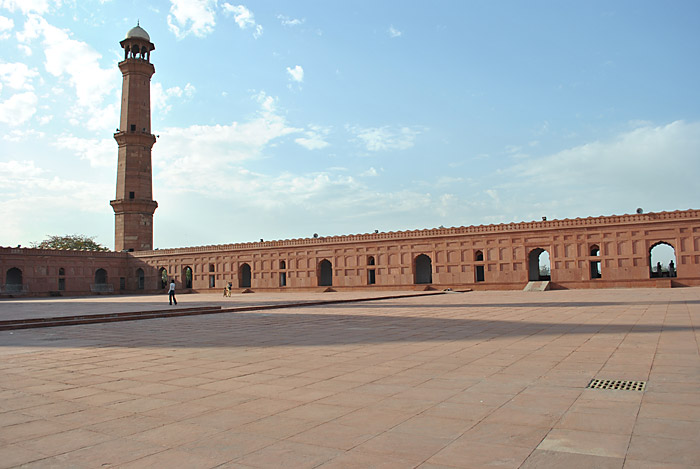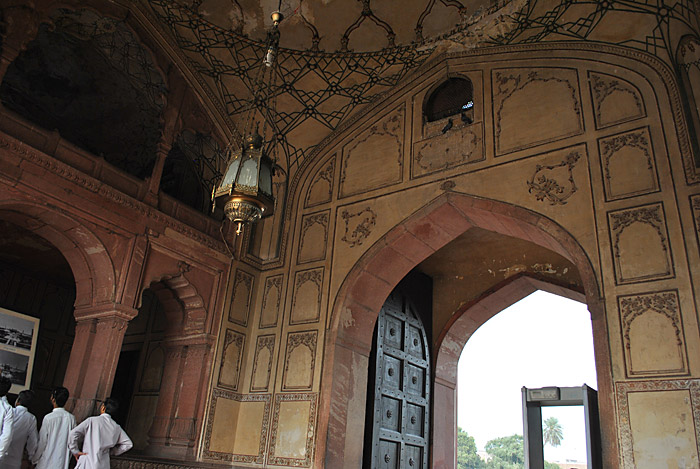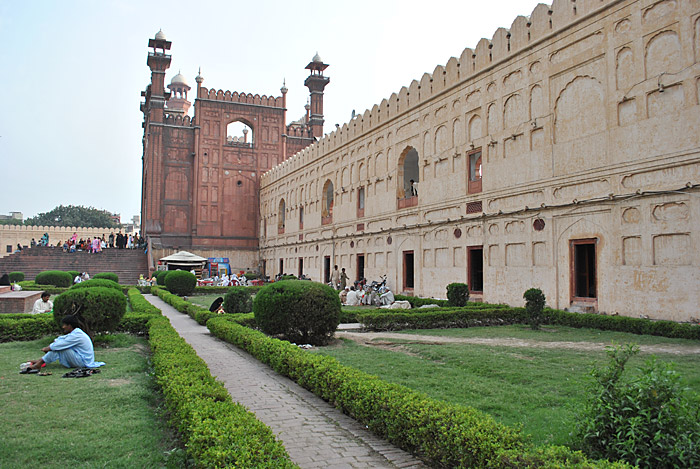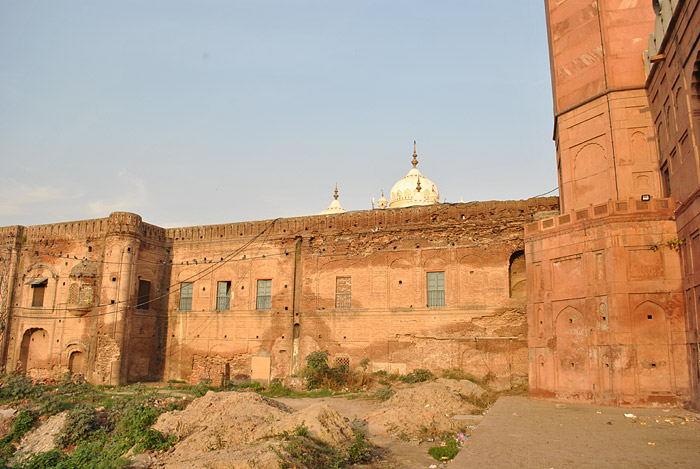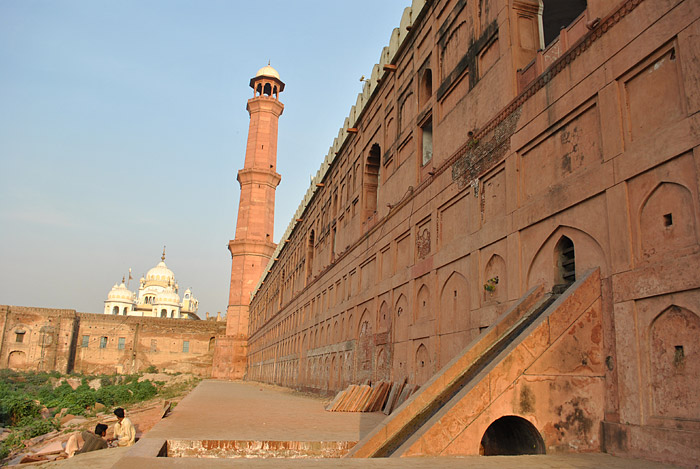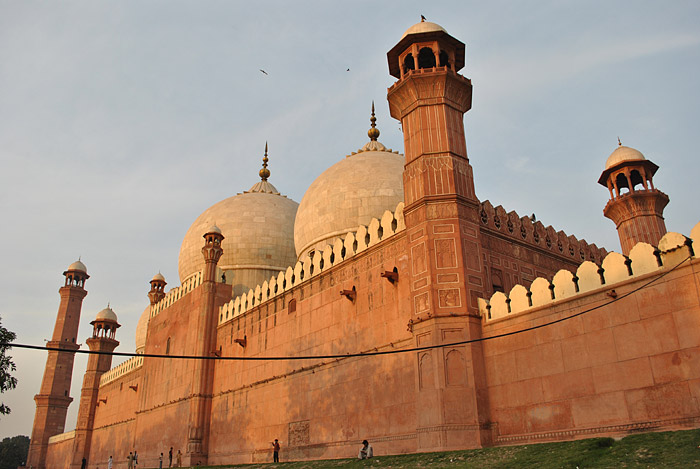Badshahi Mosque
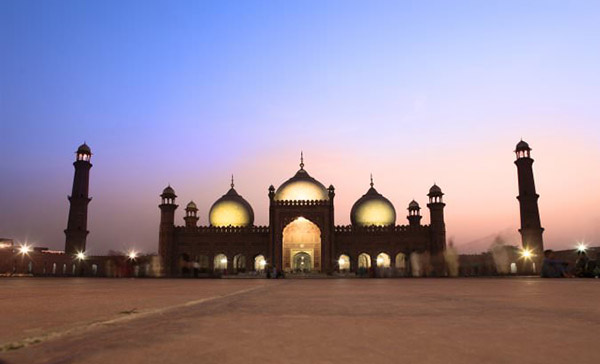
.
La mezquita Badshahi es uno de los pocos monumentos arquitectónicos importantes construidos durante el largo gobierno del emperador Aurangzeb de 1658 a 1707. Actualmente es la quinta mezquita más grande del mundo y fue indiscutiblemente la mezquita más grande del mundo desde 1673 hasta 1986 cuando se construyó la mezquita Faisal en Islamabad. Aunque fue construido a finales de la era mogol en un período de relativa decadencia, su belleza, elegancia y escala personifican el logro cultural mogol como ningún otro monumento en Lahore.
La construcción de la mezquita comenzó en 1671 bajo la dirección de Muzaffar Hussain (Fida'i Khan Koka), cuñado de Aurangzeb y gobernador de Lahore. Originalmente fue planeado como un relicario para salvaguardar un mechón del cabello del Profeta. Su gran escala está influenciada por la mezquita Jama de Delhi que había sido construida por el padre de Aurangzeb, Shah Jahan. El plano de la mezquita Badshahi es esencialmente un cuadrado que mide 170 metros de cada lado. Dado que el extremo norte de la mezquita se construyó a lo largo del borde del río Ravi, no fue posible instalar una puerta norte como la utilizada en la mezquita Jama, y tampoco se construyó una puerta sur para mantener la simetría general. . Dentro del patio, la sala de oración presenta cuatro minaretes que hacen eco en miniatura de los cuatro minaretes en cada esquina del perímetro de la mezquita.
La prominencia de la mezquita en la visión imperial era tal que se construyó a solo unos cientos de metros al oeste de Lahore Fort. Se añadió al fuerte una puerta especial que daba a la mezquita y se designó la puerta Alamgiri. El espacio intermedio, el futuro jardín Hazuri Bagh, se usó como un patio de armas donde Aurangzeb pasaría revista a sus tropas y cortesanos. Hazuri Bagh parece estar en un nivel más bajo que la mezquita, ya que esta última fue construida sobre un pedestal de seis metros para ayudar a prevenir inundaciones.
A la mezquita no le fue bien durante el gobierno de Ranjit Singh, el maharajá del Imperio sij. Cuando Ranjit Singh tomó el control de Lahore en 1799, el patio de la mezquita se usó como establo y las hujras (celdas) alrededor del perímetro fueron ocupadas por sus soldados. El mismo Ranjit Singh usó el vecino Hazuri Bagh como su corte real oficial. Cuando William Moorcroft de Inglaterra visitó Lahore en 1820, registró que la mezquita se usaba como campo de ejercicios para la infantería Sipahi. Veinte años después, un terremoto moderado golpeó a Lahore y derrumbó las delicadas torretas de mármol en la parte superior de cada minarete. Las torretas abiertas se utilizaron como emplazamientos de armas un año después, cuando el hijo de Ranjit Singh, Sher Singh, ocupó la mezquita para bombardear el fuerte de Lahore durante la guerra civil sij.
Badshahi mosque is one of the few significant architectural monuments built during Emperor Aurangzeb's long rule from 1658 to 1707. It is presently the fifth largest mosque in the world and was indisputably the largest mosque in the world from 1673 to 1986 when the Faisal Mosque was constructed in Islamabad. Although it was built late in the Mughal era in a period of relative decline, its beauty, elegance, and scale epitomize Mughal cultural achievement like no other monument in Lahore.
Construction of the mosque began in 1671 under the direction of Muzaffar Hussain (Fida'i Khan Koka), Aurangzeb's brother-in-law and the governor of Lahore. It was originally planned as a reliquary to safeguard a strand of the Prophet's hair. Its grand scale is influenced by the Jama Mosque of Delhi which had been built by Aurangzeb's father Shah Jahan. The plan of Badshahi mosque is essentially a square measuring 170 meters on each side. Since the north end of the mosque was built along the edge of the Ravi river, it was not possible to install a north gate like the one used in the Jama Mosque, and a south gate was also not constructed in order to maintain the overall symmetry. Within the courtyard, the prayer hall features four minarets that echo in minature the four minarets at each corner of the mosque's perimeter.
The prominence of the mosque in the imperial vision was such that it was constructed just a few hundred meters to the west of Lahore Fort. A special gate facing the mosque was added to the fort and designated the Alamgiri gate. The space in between--the future Hazuri Bagh garden--was used as a parade ground where Aurangzeb would review his troops and courtiers. The Hazuri Bagh appears to be at a lower level than the mosque since the latter was built on a six meter plinth to help prevent flooding.
The mosque did not fare well during the rule of Ranjit Singh, the Maharaja of the Sikh Empire. When Ranjit Singh took control of Lahore in 1799 the mosque's courtyard was used as a stable and the hujras (cells) around the perimeter were occupied by his soldiers. Ranjit Singh himself used the adjacent Hazuri Bagh as his official royal court. When William Moorcroft of England visited Lahore in 1820, he recorded that the mosque as being used as an exercise ground for the Sipahi infantry. Twenty years later, a moderate earthquake struck lahore and collapsed the delicate marble turrets at the tops of each minaret. The open turrets were used as gun emplacements a year later when Ranjit Singh's son, Sher Singh, occupied the mosque to bombard Lahore Fort during the Sikh civil war.
